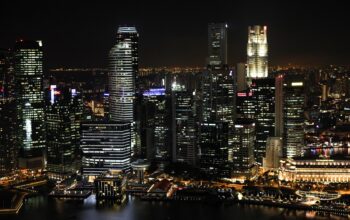In an era where climate change concerns are on everyone’s radar, the real estate sector is stepping up to make meaningful changes. From tiny homes made from recycled materials to green building technologies that promise energy efficiency, the push for environmental sustainability in real estate is more vital than ever.
1. Tiny Homes, Big Impact One of the most exciting developments in sustainable housing comes from Azure Printed Homes. This company is shaking up the prefab market by creating homes with over 150,000 recycled plastic bottles per unit. These innovative structures can be built in as little as 24 hours and cost around $20,000. Azure’s approach not only provides affordable housing solutions but also addresses waste management by repurposing plastics into functional living spaces. This model demonstrates that sustainability can go hand-in-hand with affordability and speed, crucial factors in today’s tight housing market.
2. The Cool Factor: CoolCrete™ NCP Industries has introduced a game-changer known as CoolCrete™, a sustainable material designed to reduce heat absorption in urban areas. When applied to rooftops and outdoor spaces, this material combats the urban heat island effect, potentially lowering surrounding temperatures significantly. By typical estimates, spaces coated with CoolCrete can see energy cost savings of 10-15% due to lower cooling demands. It’s an eco-friendly solution that promises to enhance both comfort and energy efficiency in cities.
3. Smart Building Systems for Efficiency Green building technologies have taken center stage, integrating smart systems that optimize energy usage. These systems adjust lighting, heating, and cooling based on real-time occupancy data. For instance, automated energy management systems help control power consumption, ensuring that buildings operate efficiently and sustainably. Such innovations not only save energy but also promote healthier indoor environments, which is increasingly important as our homes become more insulated and sealed.
4. A Sustainable Revolution in Texas In Texas, the green development sector is gaining traction with companies like SGD leading the way. They focus on integrating sustainable practices into their business model, emphasizing engineered soils and composting solutions. These approaches help mitigate environmental impacts without sacrificing financial performance. Their commitment to combining cutting-edge technology with sustainability reflects a growing trend among real estate developers who understand that meeting today’s needs requires innovative and responsible solutions.
5. Recognition for Innovative Solutions Azure Printed Homes recently garnered recognition as one of Fast Company’s Most Innovative Companies in Urban Development and Real Estate. Their innovative use of modern manufacturing techniques and sustainable materials has put them on the map as leaders in the industry. This kind of recognition not only highlights the importance of sustainable practices but also encourages other players in the real estate sector to adopt similar initiatives.
Conclusion: The Momentum of Sustainability The real estate industry is at a crucial juncture, with sustainability becoming a non-negotiable aspect of development. These innovations—be it in energy-efficient technologies, sustainable materials, or novel approaches to home construction—showcase a dynamic shift towards a greener future. As more companies embrace these practices, the promise of environmental sustainability in real estate not only becomes a reality but also defines the industry’s evolution in the coming years.
References:
- https://illustrarch.com/articles/architectural-sustainability/44756-green-architecture-building-a-sustainable-future.html
- https://www.scusd.edu/sites/main/files/file-attachments/april_10_2025_amended_packet.pdf?1744070420
- https://ncpindustries.com/coolcrete/
- https://www.pmi.com/resources/docs/default-source/pmi-sustainability/pmi-integrated-report-2024.pdf?sfvrsn=92e147c8_2
- https://farmonaut.com/usa/revolutionizing-real-estate-strategic-asset-monetization-and-sustainable-growth-in-texas-green-development-sector/
- https://www.environmentenergyleader.com/stories/azure-printed-homes-recognized-as-a-leader-in-urban-innovation,70471
- https://www.jpmorganchase.com/content/dam/jpmc/jpmorgan-chase-and-co/investor-relations/documents/line-of-business-ceo-letters-to-shareholders-2024.pdf
- https://www.prnewswire.com/news-releases/real-estate-investors-and-innovators-gather-to-drive-actionable-esg-and-decarbonization-strategies-302423675.html



